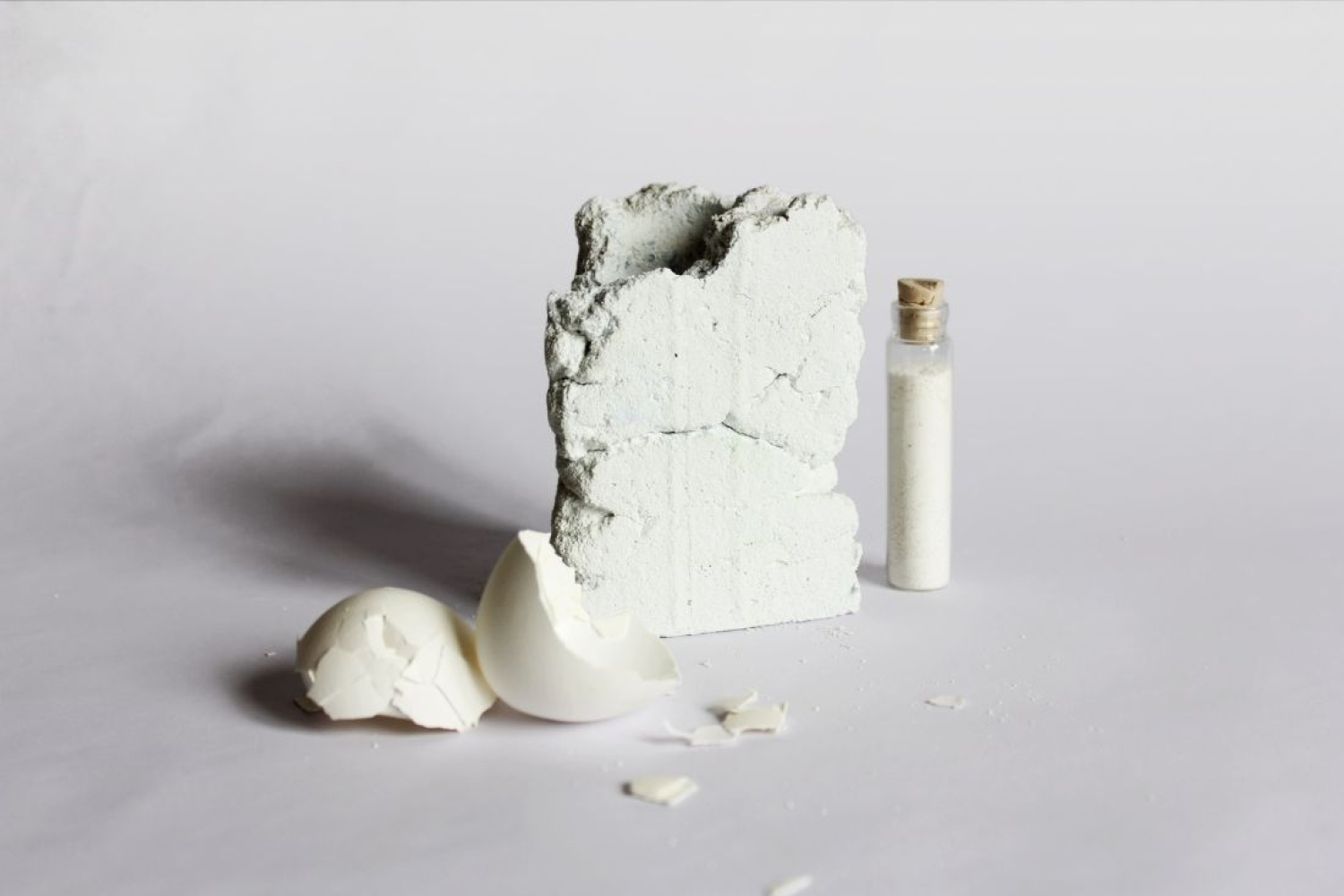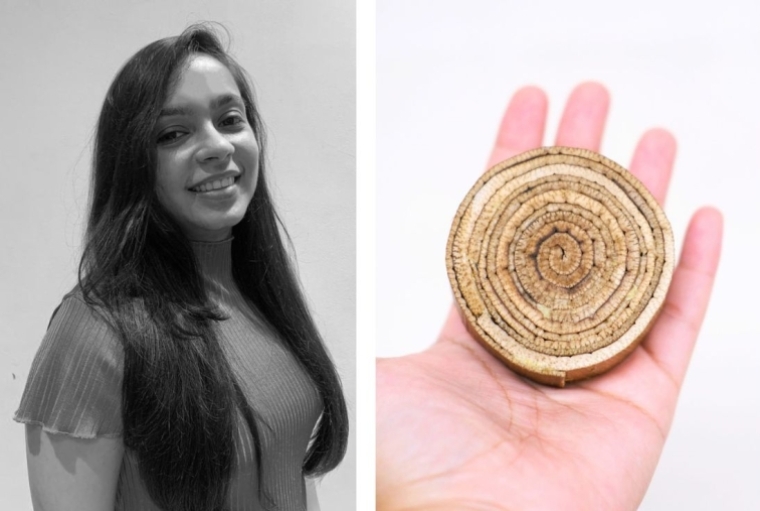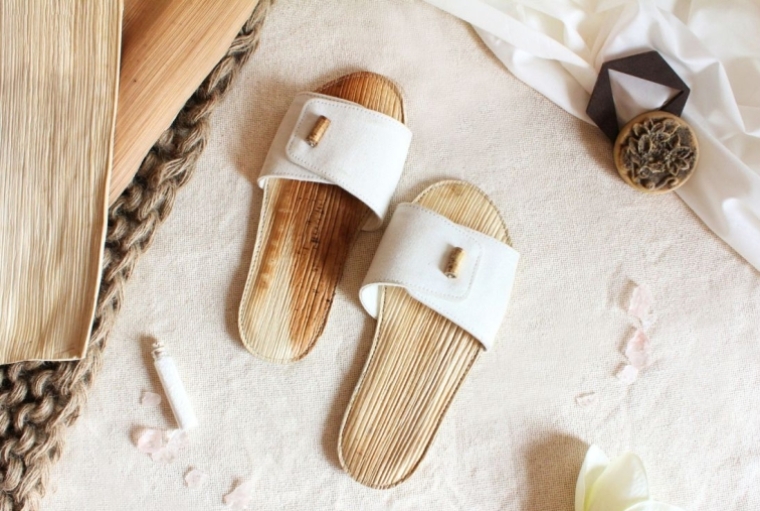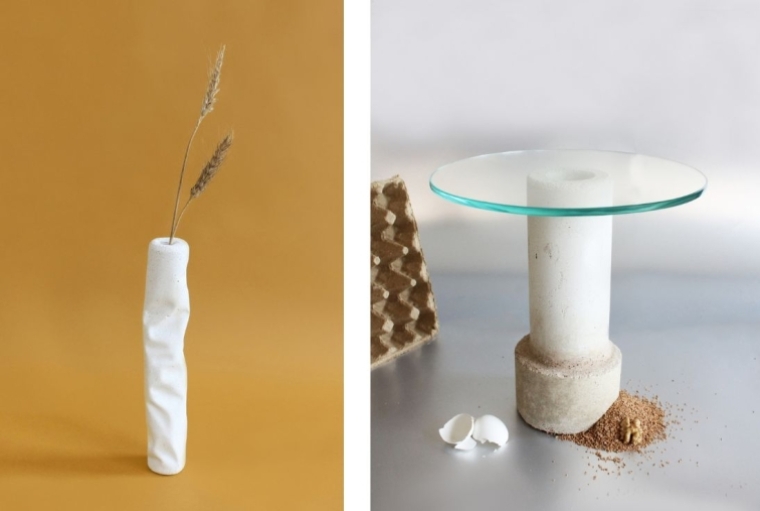

Have you heard of products made from discarded eggshells or upcycled chicken feathers? Ylem is here to make all sorts of creative eco-friendly designs. In a world increas- ingly aware of the need for sustainable solutions, Midushi Kochhar, founder of Ylem, is at the forefront of innova- tive design that marries creativity with environmental consciousness. From slippers made from leaf leathers and bamboo furniture to vases from eggs and decorative lighting from feathers, the New Delhi based brand specializes in crafting functional, aesthetically pleasing, and market-ready sustainable solutions. The initiative not only seeks to transform overlooked waste into valuable resources but also aims to raise awareness about climate issues and challenge misconceptions surrounding discarded materials.
Kochhar shared her insights on sustainable design and the evolution of her work in our conversation.

THE GENESIS OF YLEM
Midushi’s journey into green design wasn’t a calculated decision; rather, it stemmed from an innate curiosity. ‘Ylem is my second company based here in New Delhi, and Makers on the Move is based in the Netherlands,’ she explains. ‘The journey started in green design; it’s quite an organic direction for me. It didn’t start with the motivation of creating sustainable things. It was just a curiosity of using the things that are around me—both natural and manmade waste.’ Reflecting on her childhood, she adds, ‘You know, like when we were children, we would be curious about random things that we find on the street. I feel lucky to have maintained that curiosity even as an adult.’
RESEARCH AND DEVELOPMENT CHALLENGES
When it comes to developing new materials, Midushi emphasizes the importance of starting with the material itself. ‘For me, it is material first. If you’ve looked at my projects, the eggware, chicken feathers, or leaves—it’s the materiality of things that first engage me,’ she says. However, the journey from research and development to creating a usable product can be daunting. ‘It’s a totally different ball game. First, you have to do the R&D, then have a useful output, and finally be able to scale it. All these aspects are completely different.’

SUSTAINABILITY MEETS EVERYDAY NEEDS
A critical aspect of sustainable design is its ability to meet everyday needs while raising environmental awareness. ‘It could be a top-to-bottom or bottom-up approach,’ Midushi explains. ‘If I’m looking at waste, say human hair, and I can create a textile that you can actually wear, then the consumer doesn’t have to think twice about its sustainability. It’s right in front of them.’ She emphasizes that the goal is to provide consumers with sustainable choices. ‘What we’re trying to do is make products as sustainable as possible so that the go-to option is a green product.’
ADVICE FOR EMERGING DESIGNERS
For emerging designers interested in sustainability, Midushi encourages integration of sustainable practices into their projects. ‘Nowadays, in my experience, all universities have a requirement to make products sustainable. It’s becoming part of the ecosystem,’ she notes. ‘It’s not something extra that you have to work on; it’s part of the ideation process.’ However, she warns of the pitfalls of greenwashing, stating, ‘There are a lot of brands that are just using the word ‘sustainable.’ For example, they might say they use cotton, but cotton is not exactly sustainable if you consider water consumption.’

LOOKING AHEAD: EXPLORING E-WASTE
Midushi is now turning her attention to the pressing issue of e-waste. ‘E-waste is such a massive category,’ she says. ‘There’s a huge amount of waste generated from consumer products like refrigerators and cell phones, and many countries import e-waste from first-world nations.’ Her goal is to find ways to extract valuable materials from this waste, an endeavor that remains underexplored in the current market.
MAKING SUSTAINABLE PRODUCTS ACCESSIBLE
One challenge facing sustainable products is their often high price point. ‘Just because a product is labeled as sus- tainable doesn’t mean it’s cheap for the consumer,’ Midushi explains. ‘The making isn’t actually quite cheap, and the labor laws in manufacturing countries aren’t strong.’ She points out the historical context of materials like plastic, stating, ‘Plastic took over 50 years to develop and is now ubiquitous. Pressuring sustainable materials to be equivalent in pricing just as they are starting to grow is quite unfair.’ Yet she remains hopeful, noting that ‘there are thousands of materials being sourced within sustainability. It won’t be one glorious material like plastic, but hundreds of better materials that could potentially lower prices.’
Words Paridhi Badgotri
Date 30.10.2024